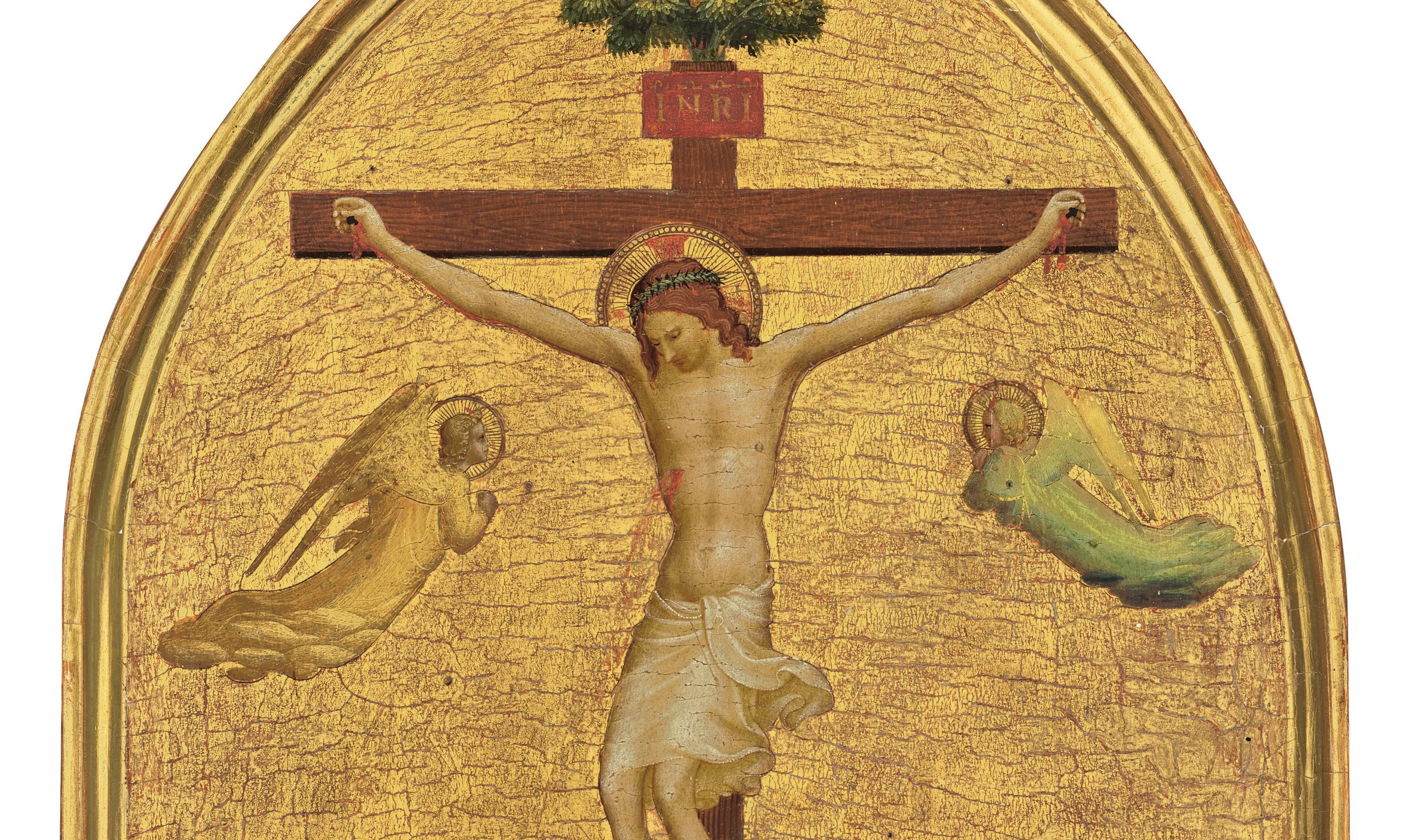Christ on the Cross, with the Virgin, St John the Evangelist and the Magdalen by Fra Angelico
Courtesy of Christie's
Autograph works by Fra Angelico at auction are rare as hen’s teeth. But in its Old Master paintings evening sale on 6 July, Christie’s will offer an early 15th-century gold-ground crucifixion scene, rediscovered in the 1990s as a work by the early Renaissance Florentine artist. It has an estimate of between £4m and £6m.
“Great works of art have an inevitability of their own; and it seems astonishing that Fra Angelico's name has not previously been invoked in connexion with a devotional panel of Christ on the Cross, with the Virgin, St John the Evangelist and the Magdalen,” wrote Francis Russell, Christie’s UK deputy chairman, in an article in the Burlington Magazine in May 1996, which first revealed the new attribution. The work had previously been ascribed to Lorenzo Monaco, in whose Florentine workshop Fra Angelico is thought to have trained.
Russell describes the “thrilling moment” he first set eyes on the painting in the early 1990s: “Intensely personal, it also expresses his [Fra Angelico’s] understanding of the revolutionary achievement of the great Florentine sculptors of his time. The tenderness with which Christ is depicted is matched by the raw emotion of the Virgin and the pathos of the kneeling Magdalen clinging to the Cross, the thickness of which is revealed by the position of her arms. Every gesture is perfectly weighed. The sensitivity of the painter’s use of colour is evident in the way the blood both of Christ and the pelican above is matched in the robe of the Magdalen. With Fra Angelico nothing was accidental.”
Although the exact date is not known, the panel is thought to have been painted between around 1419 and 1424. This attribution has been supported by five scholars who have written on the work—Diane Cole Ahl, Laurence Kanter, Giorgio Bonsanti, Gerardo de Simone and Ginevra Utari—as well as Carl Brandon Strehlke, the curator emeritus at the Philadelphia Museum of Art, who organised the 2019 exhibition Fra Angelico and the Rise of the Florentine Renaissance at the Prado in Madrid. The show celebrated the museum’s acquisition of a major Madonna by the artist and the gift of a small panel (previously attributed to Fra Angelico by Russell).
Angelo Tartuferi and Arturo Galansino, the curators of a forthcoming Fra Angelico exhibition at the Palazzo Strozzi in Florence (26 September 2025-25 January 2026), for which the loan of the Christie’s crucifixion work has been requested, have also backed the attribution. "So far as I am aware no one has doubted Angelico’s authorship," Russell says.
The panel is thought to have been acquired by William Bingham Baring, 2nd Lord Ashburton (1799-1864), in the 18th century, and has been passed down by descent within the family. When Russell first saw the work at the home of the vendors in the early 1990s, he was convinced it was a work by Fra Angelico due to the "exceptional distinction of the panel…a combination of its refined calibre, detailed morphology and the radiant colour could have led to no other conclusion." He adds: "There is no evidence of assistance, so I believe the picture is wholly by Fra Angelico."
The work has been examined by a restorer "with an intimate knowledge of Fra Angelico’s technique," Russell says, adding that "no scientific tests are relevant." It has not been cleaned or restored in living memory, “although a small test has recently been made to the gold ground,” Russell says. “While the figures are in exceptionally good condition, certain areas of the gold ground were retouched in the past.”
There are only two recorded auction sales of Fra Angelico works this century: one small panel sold by Christie’s in New York last year for $4.7m (with fees) and a slightly larger Crucifixion with saints, which is subject to an export ban, sold in Italy in 2003 for $1.2m (with fees). “The larger Madonna bought by the Prado was purchased at a reduced price…[The Virgin of the Pomegranate which was purchased privately via a “gentleman’s agreement” in 2016 from the Spanish Alba ducal collection, for €18m] because Spanish regulations prohibited its export,” Russell says.
The work is not currently guaranteed nor, Russell says, will it be available for guarantee.

